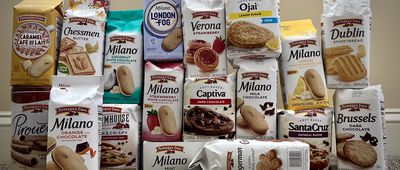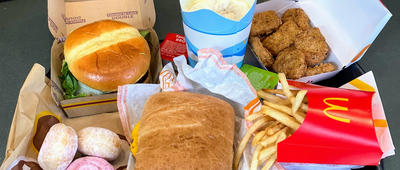The debate of whether Mexican Coca-Cola is superior to American Coca-Cola is a longstanding one. It's a subject that has sparked lively conversations around the dinner table and left many taste buds divided. Some swear by the sweet nectar of the Mexican version, while others remain loyal to the classic American soft drink.
But what's the reason behind the Mexican Coke versus American Coke battle? Could it be the use of cane sugar in Mexican Coke that, for many, makes it a cut above the rest — both in terms of flavor and potential health benefits? We gave them both a try to dig deeper into this fizzy standoff.
What Is Mexican Coke?
It's no secret that the formulas for Mexican Coke and American Coke differ when it comes to their sweetening agents. The Mexican version boasts the use of cane sugar, while its American counterpart relies on the ubiquitous high fructose corn syrup (HFCS). Fans of Mexican Coke argue that the less processed nature of the cane sugar make the soda taste crisper and fizzier than the classic American version.
In the past, one had to scour specific stores, bodegas, or neighborhoods with a significant Mexican-American presence to find the elusive "Coke hecho en México" (made in Mexico). In recent years, however, the popularity of Mexican Coke has skyrocketed, and you can now find it gracing the shelves of many grocery stores, gas stations, and Chipotle locations.
But does that mean Mexican Coke automatically reigns supreme? First, let's understand how Mexican Coke is made, and how cane sugar differs from HFCS.
Cane Sugar vs. High Fructose Corn Syrup
Cane sugar — derived from sugarcane plants — undergoes a less intensive refining process compared to HFCS. This means that it can retain more of its natural characteristics and trace nutrients to result in a less chemical-like taste.
One argument in favor of cane sugar is that it has a lower fructose content compared to HFCS. Studies suggest that excessive fructose intake — especially in the form of HFCS — may be linked to negative health effects such as weight gain, high blood pressure, and Type 2 diabetes.
Cane sugar also has a lower glycemic index (GI) compared to HFCS. The glycemic index is a measure of how quickly a food raises blood sugar levels. Foods with a lower GI are generally considered to have a more favorable impact on blood sugar control. However, both versions of Coke clock in at 39 grams of sugar per 12-ounce bottle — a significant amount of added sugars.
Mexican Coke vs. American Coke Taste Test
When I popped open the glass bottle of Mexican Coke, the familiar sound of escaping fizz felt like music to my ears, taking me back to my childhood when my parents would pack ice-cold sodas and snacks for us to enjoy by the pool or at the beach. As I took that first sip, I noticed how it indeed had a crisp and clean finish — slightly more so compared to American Cokes I've had in the past.
Next, I gave the American Coke in the plastic bottle a try. While still enjoyable and satisfying over ice, it lacked that same effervescence from the Mexican Coke — it's as if the bubbles had lost a bit of their pep along the way. While more robust and thicker in consistency, the liquid left a syrupy and unpleasant aftertaste that lingered in my mouth far longer than the Mexican Coke.
It's worth noting that Mexican Coke is packaged in glass bottles, while American Coke is more frequently found in plastic bottles and metal cans (though you may still come across American Coke in glass bottles). I can see that affecting taste when subject to extreme temperatures during packaging and transport.
The Verdict: To Each Their Own Fizzy Bliss
To state the obvious: Taste is subjective. Some may prefer the velvety sweetness of the cane sugar-laden Mexican Coke, while others find solace in the bolder and thicker flavors of American Coke with HFCS. I personally prefer the crisper and slightly lighter aftertaste of Mexican Coke, whereas my girlfriend (who was my co-pilot in this taste test) is a die-hard fan of classic American Coke, and could not be convinced otherwise. Ultimately, the choice is yours, and it's okay to have a preference.
For more fun taste tests and fast-food news, please sign up for our free newsletters.

 Photo credit: Alina Wang / Cheapism
Photo credit: Alina Wang / Cheapism Photo credit: Alina Wang / Cheapism
Photo credit: Alina Wang / Cheapism Photo credit: Chinnachart Martmoh/ istock
Photo credit: Chinnachart Martmoh/ istock






